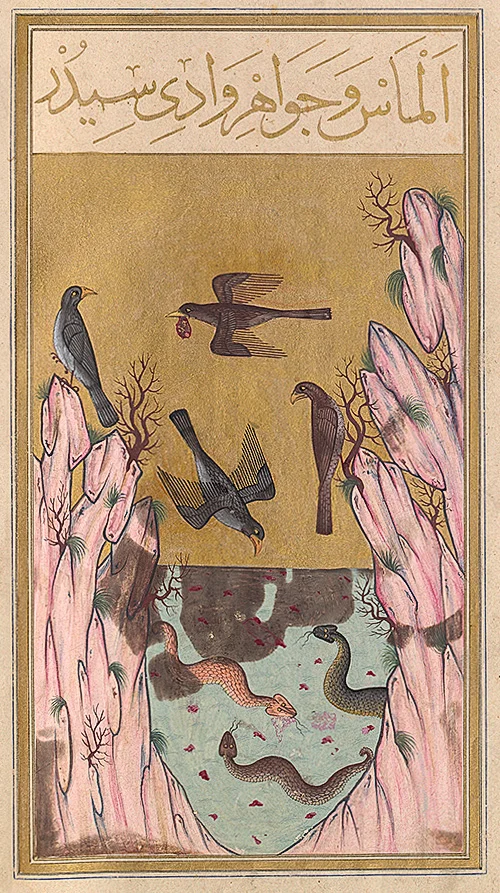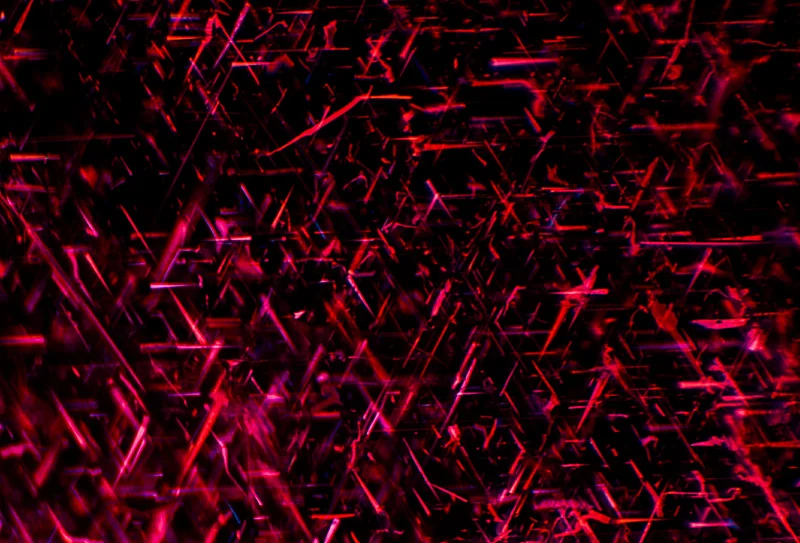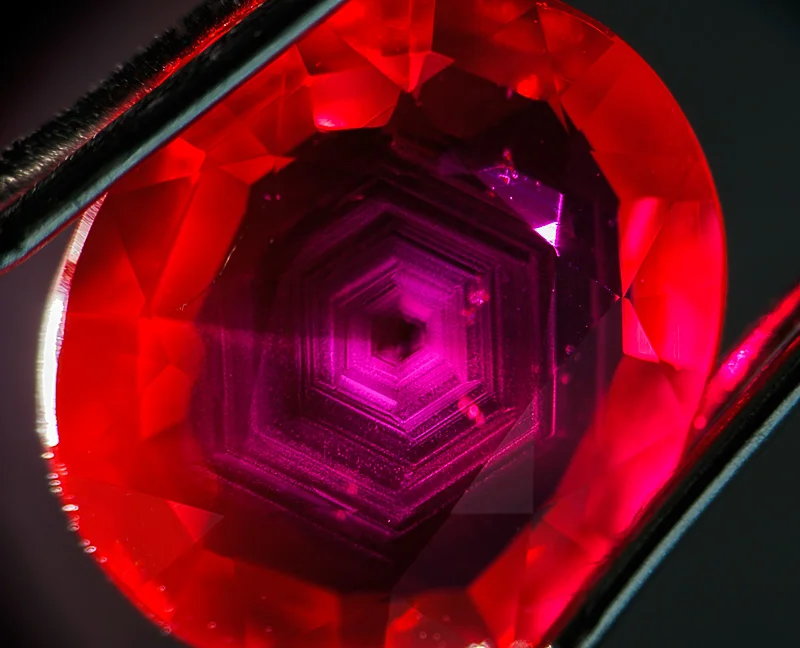Mogok - The Valley of Rubies
"Long before the Buddha walked the earth, the northern part of Burma was said to be inhabited only by wild animals and birds of prey. One day the biggest and oldest eagle in creation flew over a valley. On a hillside shone an enormous morsel of fresh meat, bright red in color. The eagle attempted to pick it up, but its claws could not penetrate the blood-red substance. Try as he may, he could not grasp it. After many attempts, at last he understood. It was not a piece of meat, but a sacred and peerless stone, made from the fire and blood of the earth itself. The stone was the first ruby on earth and the valley was Mogok".
Burma has long been associated with the most desirable rubies in the world. Within Burma (Myanmar), the most famed region is the Mogok Valley, or Mogok Stone Tract, in the Pyin Oo Lwin district, north-east of Mandalay: a small area of a dozen square miles, of which only a portion is gem-bearing. Meanwhile, there are a few more small deposits to the North of Mogok, such as Namya, that produce rubies with similar characteristics. Although it is uncertain when mining first began, accounts indicate that rubies have been sourced in the Mogok area for well over a thousand years.
An Oriental miniature dated 1582, representing the Valley of Serpents, guarded by snakes. Eagles carry in their beaks pieces of meat in which gems are embedded, illustrating an Indian legend that appears in the tale of Sinbad the Sailor in the Thousand and One Arabian Nights. Illustration courtesy of the Bibliothèque Nationale, Paris.
The earliest surviving records of mining activity began in 1597, when the King of Burma took over the mines. Burmese rubies, especially the ones from Mogok, have since sustained the longest renown.
Mogok-type rubies typically possess a red body colour and red UV-fluorescence. In addition, they may contain tiny amounts of light scattering rutile silk and a swirl-like growth pattern. It is this combination of features which give these rubies their characteristic appearance.
Rutile silk in a Burmese ruby. Photo: R.W Hughes.
Silk and fluorescence - a winning combination. Photo: Wimon Manorotkul
The ruby can command the highest prices of any coloured gemstone. Per carat prices of top-quality rubies have been rising, and broken numerous auction results. When appraising rubies, four factors come into play - Colour, Clarity, Cut, Size and Weight.
Colour is of utmost importance in determining a ruby's value. A saturated, pure, vibrant red to slightly purplish red colour is always desired. Orangey or purplish hues would rank lower on the quality scale. With certain stones that have a lighter pinkish hue, the stone would be called a pink sapphire instead. "Pigeon's Blood" is a term conferred on stones that display the finest examples of colour (slightly purplish to pinkish red, with a soft, glowing red fluorescence).
A natural, untreated ruby will almost always have some form of inclusion. Overtly conspicuous inclusions that lower a ruby's transparency, brightness or durability will always have a detrimental effect on its value. Intersecting rutile silk can sometimes cause asterism, a star effect on the surface of the ruby when it is cut into a cabochon, lending a unique beauty and increased value to the stone, when the star is of perfect symmetry, with good length (reaching the edge of the gem) and a sharp visible lines for each star.
Rubies are commonly fashioned into ovals and cushions, as these are most suitable to its natural crystal shape. Other shapes such as round, triangular, emerald-cut, pear and marquise rubies can also be found, though these would be hard to come by in larger sizes and higher qualities. The appearance of red to purplish red in one crystal direction and orangey red in the other is called Pleochroism and would be one of the considerations made during the cutting process. The cutter would always try to minimise the orangey colour by orienting the table facet to achieve a more even reddish purplish tone, but rarely at the expense of stone weight loss.
Fine rubies larger than one carat are very rare, and the price per carat increases exponentially for large size stones. Due to the higher density of rubies, a 1 carat ruby will always look smaller than a 1 carat diamond.
A Ruby and Diamond Ring (Price realised 245,000 USD) - Sold by Christie's 10th December 2015, New York (Source: www.christies.com)
Set with an oval-cut ruby, weighing approximately 4.76 carats, flanked on either side by a triangular-shaped diamond, ring size 5 1/2, mounted in platinum. Accompanied by report no. CS 71242 dated 29 October 2015 from the AGL American Gemological Laboratories stating that it is the opinion of the Laboratory that the origin of the ruby, weighing 4.76 carats, is Burma (Myanmar), with no heat enhancement.
A Ruby and Diamond Ring (Price realised USD 127,564) - Sold by Christie's, 18th May 2016, Geneva. (Source: www.christies.com)
Set with an oval-cut ruby, weighing approximately 2.08 carats, between baguette-cut diamond shoulders, within a circular-cut diamond surround, ring size 6 ¾, mounted in platinum
Accompanied by report no. 80426 dated 4 June 2015 from the SSEF Swiss Gemmological Institute stating that the origin of the ruby is Burma (Myanmar), with no indications of heating, and that the colour may also be called 'pigeon blood red'.
A Superb Ruby and Diamond Ring, by Etcetera (Price realised USD 3,3457,042) - Sold by Christie's 29th May 2012, Hong Kong (Source: www.christies.com)
Designed as a flowerhead, centering on an oval-shaped ruby weighing approximately 6.04 carats, within a cushion-shaped diamond petal surround, mounted in 18K white gold, ring size 6
With maker's mark for Etcetera
Accompanied by report no. 59356 dated 3 May 2011 from the SSEF Swiss Gemmological Institute stating that the 6.04 carat ruby is of Burma (Myanmar) origin, with no indications of heating; also accompanied by an appendix stating that the ruby possesses extraordinary characteristics and merits special mention and appreciation. The ruby exhibits a well-saturated colour combined with an outstanding purity. The few inclusions found by microscopic inspection represent the hallmarks of the classical ruby mines in the Mogok valley in Burma (Myanmar). Its vivid and saturated red colour, poetically referred to "pigeon's blood", is due to a combination of well-balanced trace elements in the stone. A natural ruby from Burma of this quality represents a great rarity and the described gemstone with its combination of outstanding characteristics is a very exceptional treasure
Also accompanied by report no. 11050003 dated 5 May 2011 from the Gübelin Gemmological Laboratory stating that the 6.04 carat ruby is of Burma (Myanmar) origin, with no indications of heating and this colour variety may also be called "pigeon's blood red" in the trade; also accompanied by an appendix and note stating that Burma has long been recognized as the locality associated with the most desirable rubies in the world. Within Burma (now Myanmar), the most famed region is the Mogok Valley, or Mogok Stone Tract, in the Katha district, North East of Mandalay. These Mogok-type rubies typically possess a red body colour and red UV-fluorescence. In addition, they may contain tiny amounts of light-scattering rutile silk and a swirl-like growth pattern. It is this combination of features which gives these rubies their characteristic appearance. The natural ruby of 6.04 carats described in the above mentioned Gübelin Gem Lab Report possesses a richly saturated and homogenous colour, combined with a high degree of transparency. In addition, this gemstone has been spared of thermal treatment. Such a combination of characteristics is rare in natural Burmese rubies of this size
Six reports dated 8 November 2011 from the Gemological Institute of America stating that the six cushion-shaped diamonds weighing from 1.24 to 0.91 carats range from D to F colour, VVS2 to SI2 clarity.
A Belle Epoque Style Burmese Ruby and Diamond Ring (Available at www.revivaljewels.com)
Centering upon an oval-cut ruby of circa 2.57 carats within a surround of millegrain set circular-cut diamonds and baguette-cut rubies, mounted in platinum, size 54 (14).
With report no. 16050134 dated 24/05/2016 from the Gübelin Gemlab, stating that the ruby is from Burma (Myanmar) origin and that no indication of heating has been detected.
Sources:
Information Face Sheet on Mogok Ruby, Gubelin
https://www.gia.edu/ruby-quality-factor
http://www.lotusgemology.com/index.php/library/articles/286-pigeon-s-blood-a-pilgrimage-to-mogok-valley-of-rubies
www.christies.com







